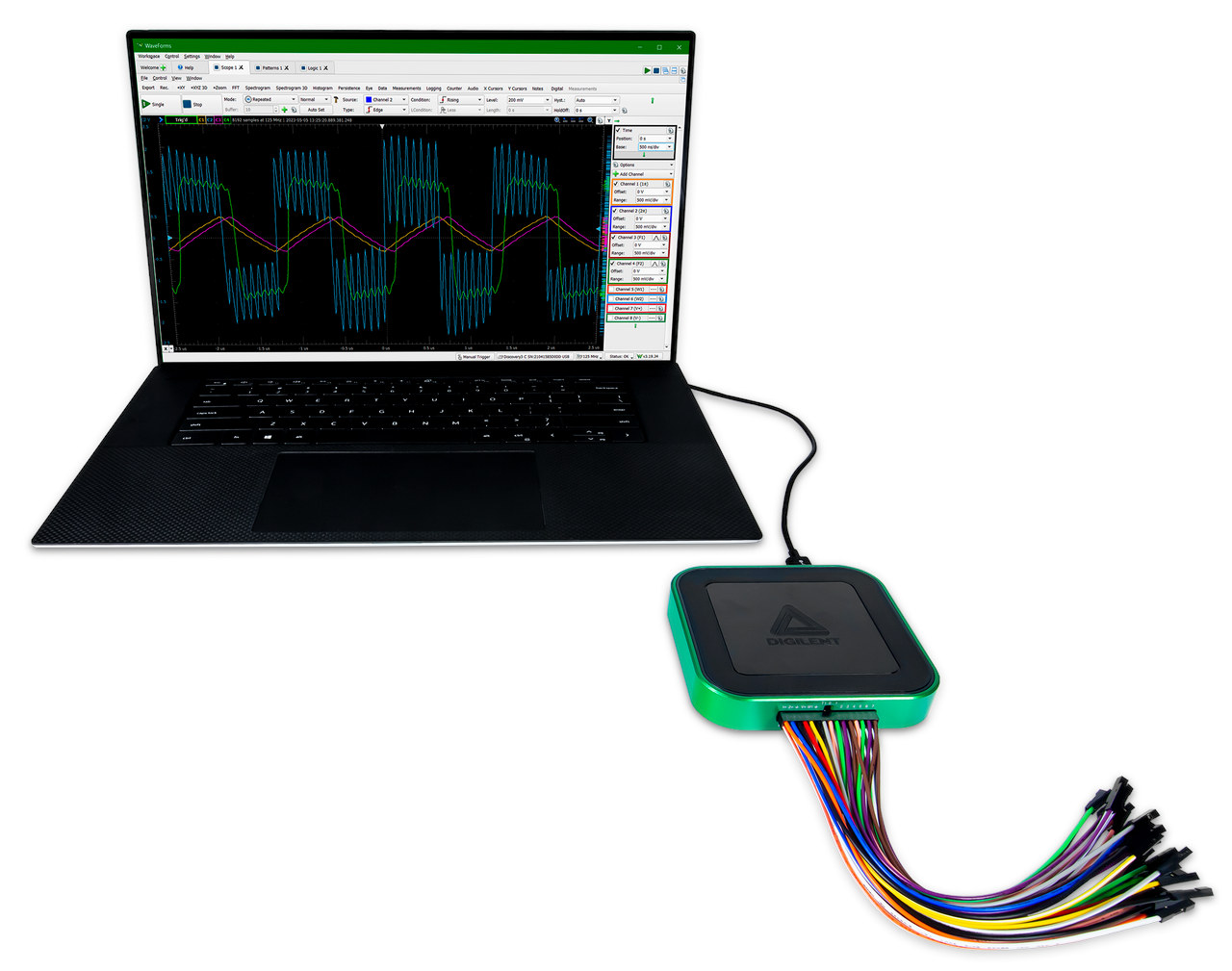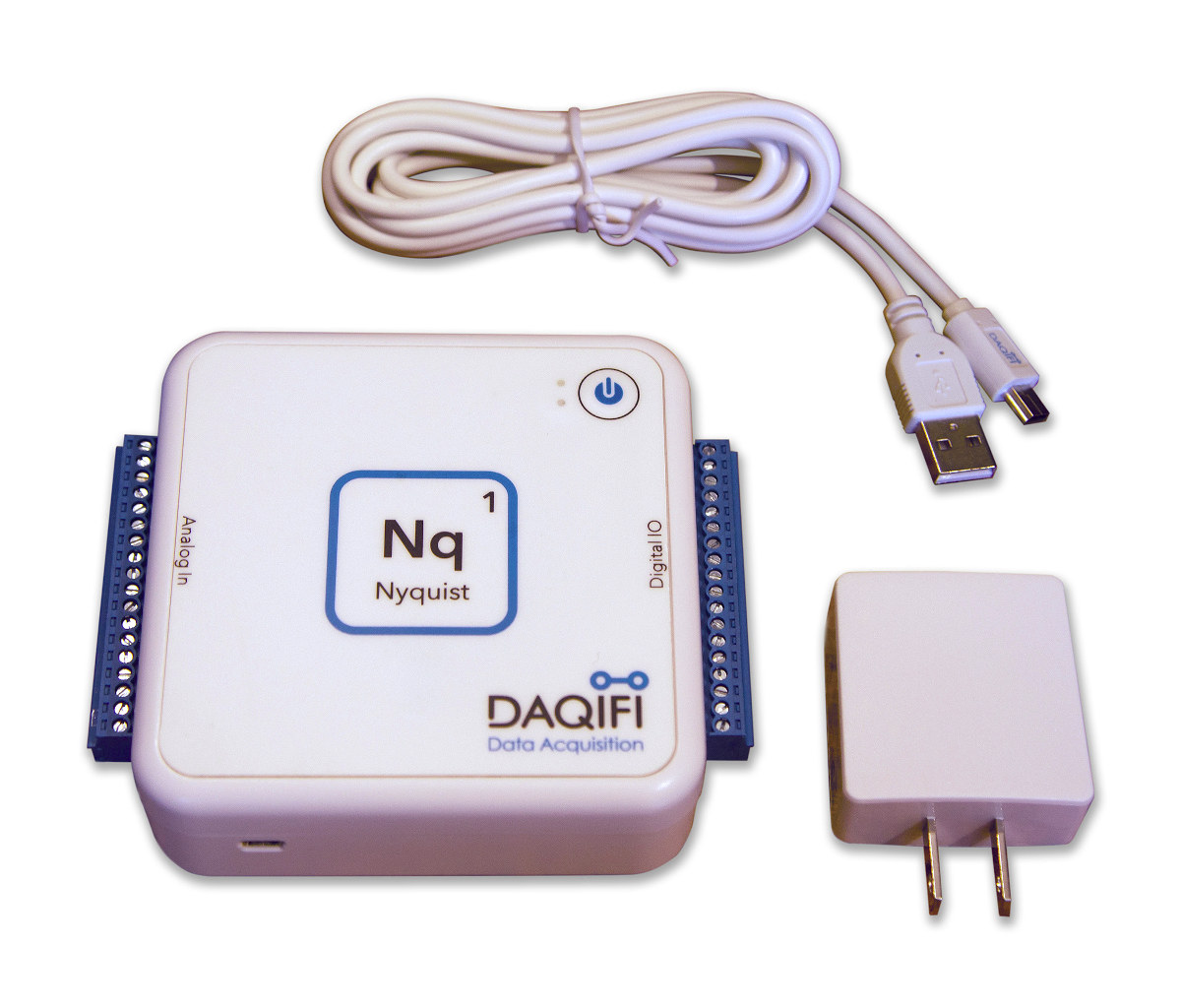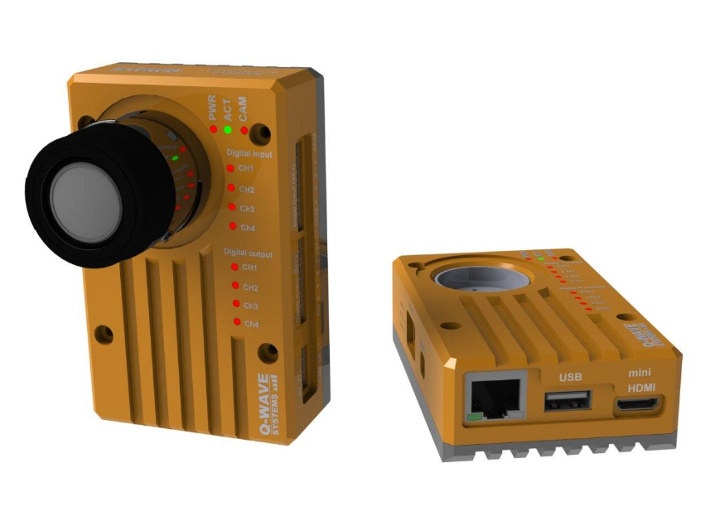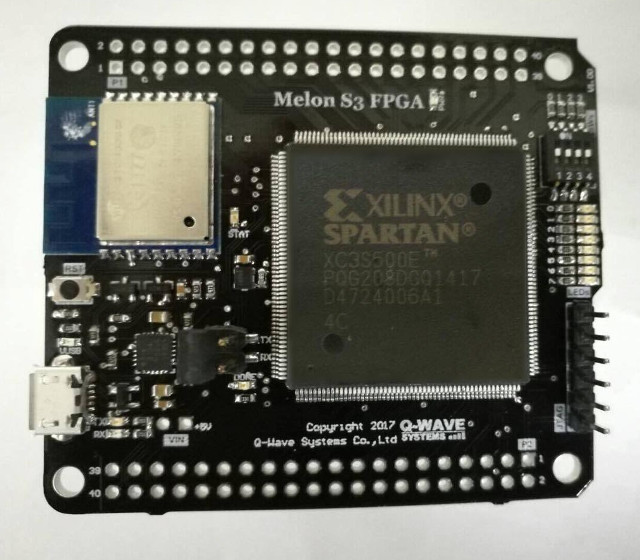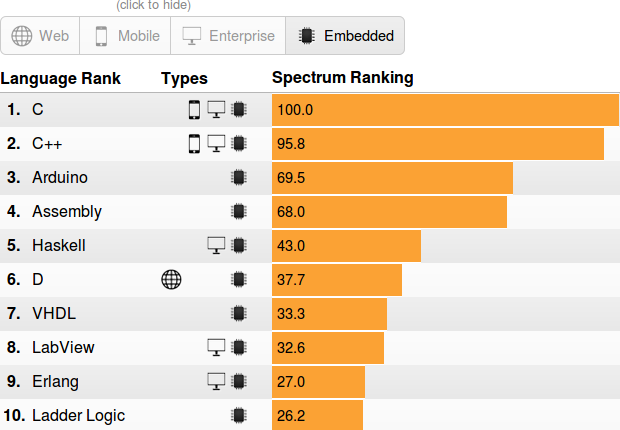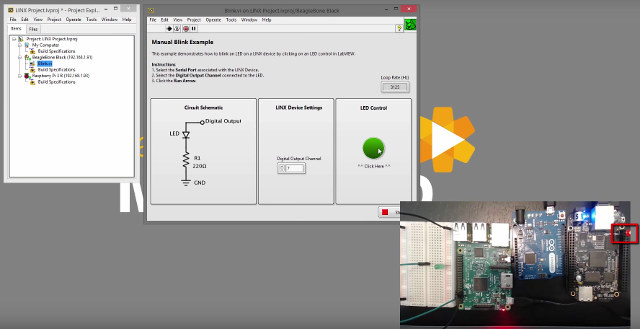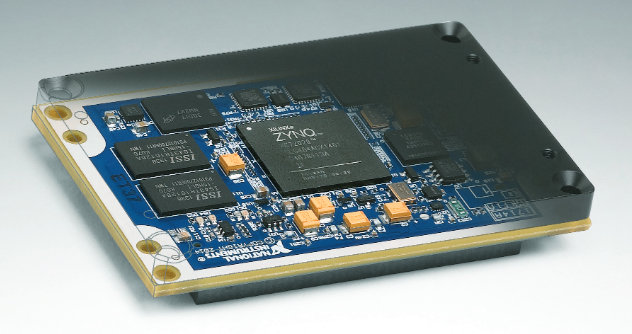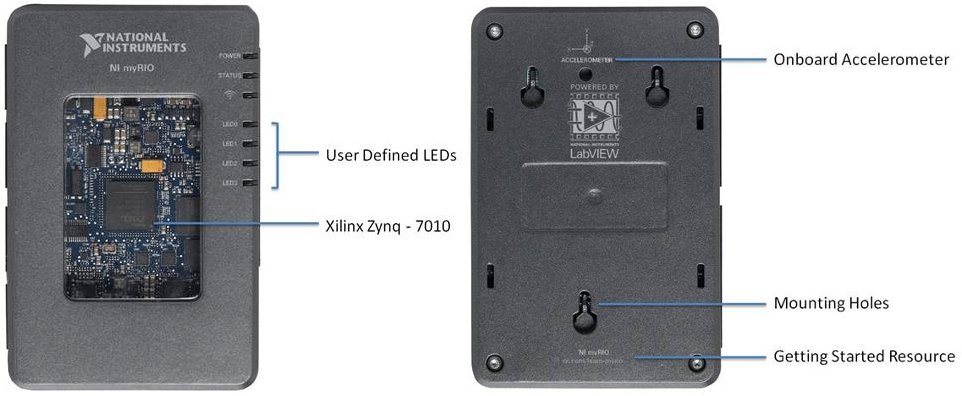Digilent Analog Discovery 3 is a USB oscilloscope with a sample rate of up to 125 MS/s, that can also be used as a waveform generator, logic analyzer, and/or a variable power supply up to 5V. Several other features are also enabled through its software and the USB-C oscilloscope can also act as a spectrum analyzer, a network analyzer, an impedance analyzer, a protocol analyzer, a data logger, a voltmeter, and supports in-app scripting. Analog Discovery 3 features highlights: Xilinx FPGA-based design Host interface – USB Type-C port Oscilloscope 2x differential channels with 14-bit resolution at up to 125 MS/s per channel with a +/-25 V input range, 30+ MHz bandwidth with BNC Adapter User-configurable input filters and lock-in amplifier FFT, Spectrogram, Eye Diagram, XY Plot views, and more Arbitrary Waveform Generator 2x channels with 14-bit resolution at up to 125 MS/s per channel with a +/-5 V output range, […]
DAQiFi Nyquist 1 – A battery-powered Wi-Fi IoT data acquisition system (Crowdfunding)
DAQiFi Nyquist 1 is a battery-powered IoT data acquisition (DAQ) device that works over an 802.11n Wi-Fi connection or a USB interface, and can also log the data to a microSD card Equipped with 16 digital I/Os and 16 analog inputs, the Nyquist 1 can be used with all sorts of sensors to measure force and strain, pressure, temperature, current & voltage, luminosity, weight, pH angular velocity, and more. It’s also possible to connect multiple Nyquist 1 devices to a single PC instead of following the traditional method of having one dedicated PC plugged into each data acquisition solution. DAQiFi Nyquist 1 hardware specifications: MCU – Unspecified Microchip microcontroller Storage – MicroSD card slot for data logging Wireless – 802.11n Wi-Fi via Microchip ATWINC1500 wireless module USB – 1x USB 2.0 port 16x analog inputs 0-5V, 12 bit 10 kHz aggregate streaming 160 kHz+ aggregate logging Up to 4 differential […]
Raspberry Pi CM3+ based EagleEye Smart Camera Works with OpenCV and LabVIEW NI Vision
We previously covered Q-Wave Systems’ Melon S3 board combining a Xilinx Spartan 3E FPGA with ESP8266, but the Thai company is back is a completely different product: EagleEye Smart Camera. The board is powered by Raspberry Pi Compute Module 3+ (CM3+) with 16GB or 32GB flash, and equipped with a 5 MP camera for machine vision and robotics applications. There are two version of the board Uno and Industrial with the latter adding 24V digital input and outputs, circuit protections and support for industrial temperature range. EagleEye smart camera key features & specifications: SoM – Raspberry Pi CM3+ with Broadcom BCM2837B0 quad core cortex-A53 processor, 1 GB RAM, and 16GB or 32 GB flash Camera – 5 MP OV5647 image sensor, CS/M12 lens holder + 4mm CS lens Video Output – mini HDMI port Networking – 10/100M Ethernet USB – 1x USB 2.0 host port up to 1.2A Expansion Uno […]
Melon S3 FPGA Arduino & Raspberry Pi Compatible Board is Programmable over WiFi using ESP8266 WiSoC
Q-Wave Systems, an embedded systems company based in Thailand, has designed Melon S3 FPGA board powered by a Xilinx Spartan 3E FPGA with WiFi connectivity added through a ESP8266 module programmable with the Arduino IDE , and featuring two Raspberry Pi compatible headers. The FPGA bitstream can be updated over WiFi, and does not require a JTAG debugger. Melon S3 FPGA specifications: FPGA – Xilinx Spartan XC3S500E FPGA with 500K gates, 73Kb Distributed RAM, 4 Digital Clock Manager (DCM), 20 Multipliers (18×18), 360 Kb Block RAM WiFi module – WROOM-2 with Espressif ESP8266 32-bit MCU @ 80 MHz supporting 802.11 b/g/n WiFi. Storage – 4MB SPI flash in total with 1MB for ESP8266, 3 MB for FPGA Expansion – 2x 40-pin Raspberry Pi compatible headers; 3.3V tolerant Debugging – Onboard USB-UART Silicon Labs CP2104 for configuration, debugging and power; 6-pin JTAG port for debugging/programming Misc – 8x Users LEDs, 4x […]
Top 10 Programming Languages in 2016 for Embedded Software Development
IEEE Spectrum has published a list of the top programming languages in 2016 for Web, Mobile, Enterprise, and Embedded sectors with rankings created by weighting and combining 12 metrics from 10 sources. So I thought it would be fun to have a look at the top 10 of languages used for embedded software, and the results are: As expected, C and C++ are at the top, but I’m quite surprised that “Arduino” is now considered a programming language, as it is simply based on C/C++. When I worked as an embedded software engineer a few years ago, I personally used C, and Assembly, and to a lesser extend C++ and VHDL. I only recently started to play with Arduino code, and while I’ve heard of most other languages in the list, it’s the first time I’ve ever seen Ladder Logic, probably because it’s designed to program PLCs in industrial control […]
LabVIEW Now Supports Raspberry Pi 2 & 3, BeagleBone Black with LINX 3.0 Release
LabView is a system-design platform and development environment with a graphical programming syntax that “makes it simple to visualize, create, and code engineering systems”. It’s often used with National Instruments hardware such as myRIO, but LabView Makerclub has also developed LINX to bring support to Arduino and chipKIT, and with the latest LINX 3.0, support for BeagleBone Black, and Raspberry Pi boards has been added. You’ll need Labview 2014 (Windows only) or greater to work with LINX 3.0, as well as one of the supported development boards. Complete Labview 2014 + board kits are also sold with the BeagleBone Black Physical Computing Kit and Raspberry Pi 2 Physical Computing Kit both going for $89 on Digilent. LabView files are save in VI format, and the same file can be used on Arduino, BeagleBone Black, and Raspberry Pi board with minor modifications (e.g. GPIO pin number) as shown in the blink […]
National Instruments Introduces NI sbRIO-9651 SoM Based on Xilinx Zynq SoC Running Linux Real-time OS
National Instruments has recently announced NI sbRIO-9651 System on Module (SoM) powered by Xilinx Zynq-7020 dual core Cortex A9 + FPGA SoC, based on LabVIEW RIO architecture used in products such as myRIO, and coming with a complete middleware solution as well as NI Linux Real-Time OS. NI sbRIO-9651 hardware specifications: SoC – Xilinx Zynq-7020 with two ARM Cortex-A9 cores @ 667MHz and Artix-7 FPGA with 85K Logic Cells System Memory – 512MB DRAM Storage – 512MB flash Dedicated processor I/O: Gigabit Ethernet USB 2.0 Host, USB 2.0 Host/Device RS232 (TX/RX) SHDC FPGA I/O: 160 single-ended FPGA I/O Configurable peripherals: Gigabit Ethernet, 3x RS232, 2x RS485, 2x CAN Power Consumption – 3 to 5 Watts (typical) Dimensions – 50.8 x 78.2 mm Temperature range – -40 to 85 °C NI SoM is said to integrate a validated board support package (BSP) and device drivers with the MI Linux Real-time OS. […]
NI myRIO is an Education Platform Powered by Xilinx Zynq-Z7010
National Instruments has been working on a device called NI myRIO, an hardware & software platform that aims at giving engineering students the ability to design real systems quickly for automation, robotics, data logging or embedded systems. The hardware is based on Xilinx Zynq-7010 with a dual-core ARM Cortex-A9 processor and an FPGA with 28,000 programmable logic cells, and features 10 analog inputs, 6 analog outputs, audio I/O channels, and up to 40 lines of digital input/output (DIO). NI myRIO Hardware Specifications: SoC – Xilinx Zynq-7010 with a dual core Cortex A9 processor and FPGA with 28,000 cells System Memory – Unknown Storage – Unknown Expansion Ports: myRIO exPansion Ports (MXP) – Two identical ports (MXP A and MXP B) with 4 analog inputs, 6 digital inputs/outputs, 2 analog outputs, 1 quad encoder, 3 PWMs, 1 UART, 1 I2C and 1 SPI by default. Ports configuration is customizable with Labview […]


